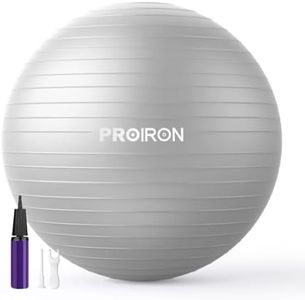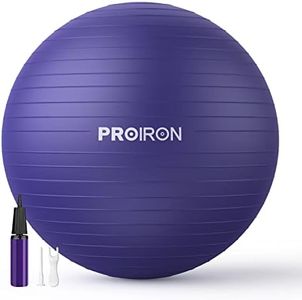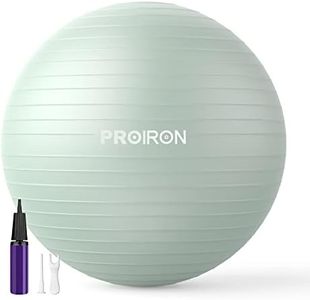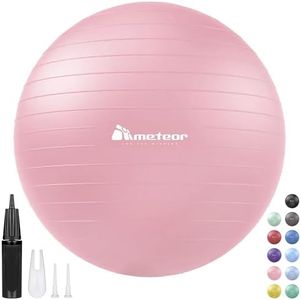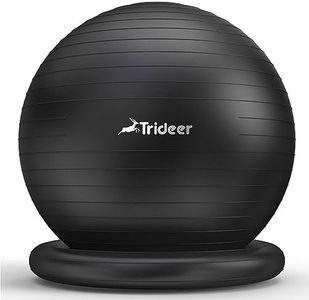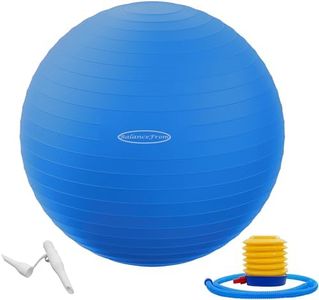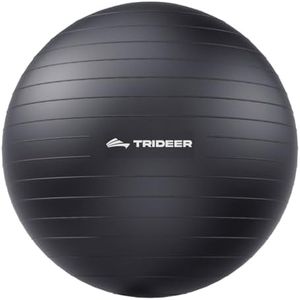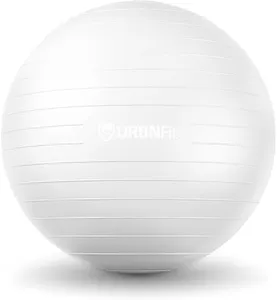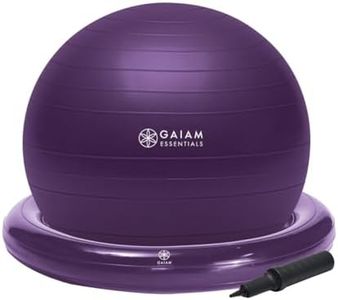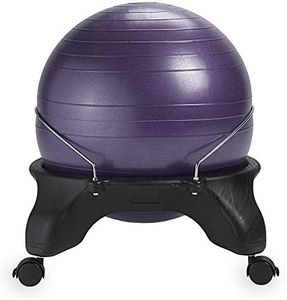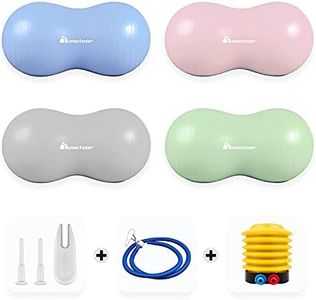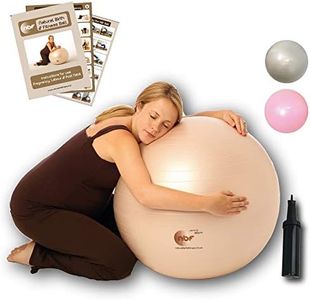We Use CookiesWe use cookies to enhance the security, performance,
functionality and for analytical and promotional activities. By continuing to browse this site you
are agreeing to our privacy policy
10 Best Birthing Ball
From leading brands and best sellers available on the web.Buying Guide for the Best Birthing Ball
Choosing a birthing ball can be a wonderful step for comfort during pregnancy, labor, or postpartum recovery. A birthing ball, sometimes called an exercise or stability ball, is a simple inflatable ball used to provide support, improve posture, and help with physical exercises. When choosing one, it's not just about picking the first ball you see—the right one will suit your body size, ensure safety, and enhance your comfort. Understanding the key features will help you find a birthing ball that meets your specific needs and preferences.Size (Diameter)The size, usually measured by diameter in centimeters, determines how well the ball will fit your body and how much support it provides. A ball that is too small or too large could be uncomfortable or even unsafe. Typically, the right size is based on your height: shorter people often need a 55 cm ball, average heights may go with a 65 cm, and taller people might choose a 75 cm ball. To pick the right one, sit on the ball—your knees should be at a right angle and your feet flat on the floor. Choose the size where you feel stable and comfortable in that position.
Material Durability (Burst Resistance)Burst resistance refers to the ball's ability to handle weight and pressure without popping suddenly. Most birthing balls are made of thick, anti-burst materials, which means if the ball is punctured, it will deflate slowly instead of bursting. This is important for safety, especially during pregnancy and labor. When considering this spec, look for balls labeled 'anti-burst' or that mention a weight capacity well above your body weight. Choose one that feels sturdy and confident under you for extra peace of mind.
Surface Texture (Non-Slip)The surface texture affects how much the ball grips the floor and prevents slipping. A non-slip, slightly textured surface keeps you stable, reducing the risk of sliding or falling, especially if you use the ball for exercises or during labor. You’ll notice smoother balls can sometimes slide on hard floors, while those with grooves or a matte finish grip better. Pick a ball with enough texture to feel secure, especially if you plan to use it on wood or tile floors.
Weight CapacityThe weight capacity tells you the maximum weight the ball can support safely. It's crucial for ensuring the ball won't give way when you sit or bounce on it. Most birthing balls support between 250 to 300 kg, which is plenty for most users. Always make sure the ball’s weight limit is higher than your body weight to ensure it remains safe and comfortable during all stages of pregnancy and postpartum use.
Pump Inclusion and Inflation EaseSetting up a birthing ball requires inflating it, and a pump can make this process much easier. Some birthing balls come with a pump, while others require you to buy one separately. It's helpful to choose a ball that includes a pump or check reviews on how easy it is to inflate. Simplicity here can save you frustration and ensure the ball achieves the right firmness for your comfort and safety.
Ease of CleaningSince the birthing ball can come into contact with your skin, clothing, or even liquids, being able to wipe it down easily is a real plus. Most balls are made from PVC or similar materials that can be cleaned with a damp cloth. If you anticipate frequent use, especially in environments like a birthing center or at home with children, prioritize a ball that is waterproof and easy to keep hygienic.
